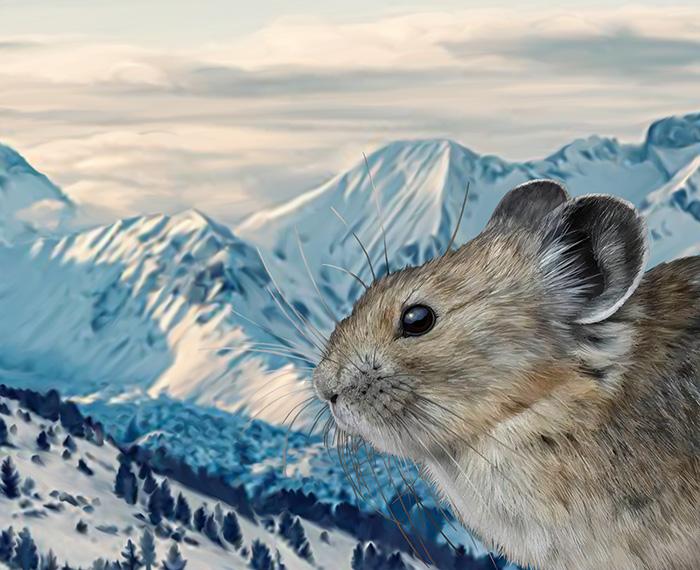
Subscribe to Pittwire Today
Get the most interesting and important stories from the University of Pittsburgh.What’s the difference between a mountain pika and a rabbit? Their noses.

Take a hike on a Colorado mountaintop, and the first thing you’ll notice is absence: of trees, of bushes, of any plants other than a few hardy grasses. New research suggests these sparse environments may provoke a surprising change in the genes of the animals that live there — one that dramatically narrows how much they can smell.
“There’s been decades of work on high-altitude conditions and responses, and this has never come up as far as I know,” said Nathan Clark, an associate professor in the Kenneth P. Dietrich School of Arts and Sciences’ Department of Biological Sciences and senior author of the study.
Researchers have indeed long been interested in how animals that have adapted to higher elevations differ from their sea-level cousins. Cold temperatures, little oxygen and harsh ultraviolet rays demand specific adaptations of creatures that live in alpine environments.
And with recent advances in biology creating widespread access to whole genomes for hundreds of different mammal species, Clark and his then-postdoctoral researcher Allie Graham, now at the University of Kansas, saw an opportunity. They could look at how those demands can be seen in an animal’s genes.
Pairing dozens of similar species that lived at elevation and sea level — marmots and groundhogs, mountain yaks and water buffalo — the team scoured their genomes, which they found published in previous studies elsewhere. By looking for pieces of DNA that were once active but have been rendered useless, they could seek patterns in which genes tend to get switched off over millions of years of adapting to mountain life.
But, as the researchers reported last month in Current Biology, they didn’t find signs of adaptations to the cold, the thin air or the harsh sun. Instead, across the board, alpine mammals lost genes related to olfactory receptors, the proteins that let them pick up smells. They had nearly a quarter fewer such genes than their lowland relatives on average.
“It was a complete surprise — we thought it just must be an artifact of something,” said Clark.
But whatever they checked, the same signal shined through the data. Finally, they found a detail that made them confident they had found something real. Graham tracked down previously published brain scans of the species and showed that high-elevation mammals had smaller olfactory bulbs, the part of the brain that processes smells. This doesn’t mean that such animals have a blunted sense of smell overall, but that they can smell fewer things.
There are several explanations that could account for this shift, and Clark favors a simple one: At elevation, there’s simply not that much to smell. With fewer plants in the environment, there would be no pressure for some olfactory receptors to remain active, and mountain dwellers likely make up for that loss with more finely honed senses of sight, touch or sound.
One limitation of the team’s approach, said Clark, is that their genetic methods can’t pick up subtle changes in DNA. That’s likely why they didn’t detect any of the other adaptations to high elevation that they expected.
“This particular lens we were looking through is pretty drastic — the most brute type of change you can make to a gene is just to kill it,” Clark said.
And in fact, the team has seen similar changes before in animals that underwent dramatic changes in lifestyle. Subterranean animals that adapted to a dark life under the surface lost genes related to capacity for sight. Whales and porpoises, which long ago returned to the ocean from the land, have lost their sense of smell completely. It may be that only a change in sensory environment is likely to trigger a wholesale switch of a gene on or off.
For Clark, findings like these validate what’s known as “curiosity-based” research. Rather than entering in with a specific hypothesis, he looks at transitions across the animal kingdom, allowing his team to find results that take even them by surprise. It’s an approach that’s led to important discoveries even when the immediate implications of research aren’t clear — discoveries that would have never happened if scientists just tested ideas they already thought were plausible.
“Scientific discovery is never a straight line,” he said. “You never know what’s going to surprise you.”
Illustration by Michelle Leveille

